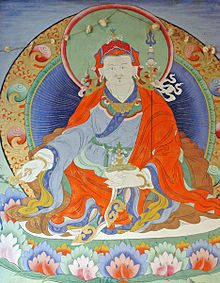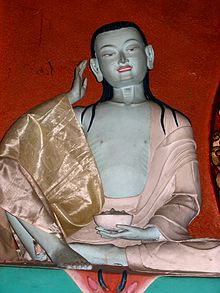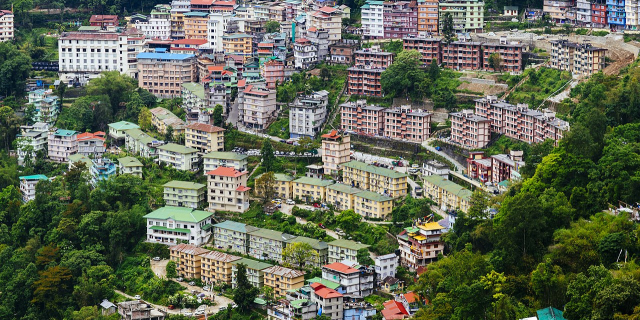Paro Taktsang (Dzongkha: སྤ་གྲོ་སྟག་ཚང་, also known as the Taktsang Palphug Monastery and the Tiger's Nest), is a sacred Vajrayana Himalayan Buddhist site located in the cliffside of the upper Paro valley in Bhutan. It is one of thirteen Tiger's Nest caves in historical Tibet in which Padmasambhava practiced and taught Vajrayana.
A later monastery complex was built in 1692, around the Taktsang Senge Samdup cave, where Guru Padmasambhava meditated and practiced with students including Yeshe Tsogyal before departing the kingdom of Tibet in the early 9th century. Padmasambhava is credited with introducing Vajrayana Buddhism to Bhutan, which was then part of Tibet, and is the tutelary deity of the country. Today, Paro Taktsang is the best known of the thirteen taktsang or "tiger lair" caves in which he and his students meditated.
The shrine dedicated to Padmasambhava, also known as Gu-ru mTshan-brgyad Lhakhang...Read more
Paro Taktsang (Dzongkha: སྤ་གྲོ་སྟག་ཚང་, also known as the Taktsang Palphug Monastery and the Tiger's Nest), is a sacred Vajrayana Himalayan Buddhist site located in the cliffside of the upper Paro valley in Bhutan. It is one of thirteen Tiger's Nest caves in historical Tibet in which Padmasambhava practiced and taught Vajrayana.
A later monastery complex was built in 1692, around the Taktsang Senge Samdup cave, where Guru Padmasambhava meditated and practiced with students including Yeshe Tsogyal before departing the kingdom of Tibet in the early 9th century. Padmasambhava is credited with introducing Vajrayana Buddhism to Bhutan, which was then part of Tibet, and is the tutelary deity of the country. Today, Paro Taktsang is the best known of the thirteen taktsang or "tiger lair" caves in which he and his students meditated.
The shrine dedicated to Padmasambhava, also known as Gu-ru mTshan-brgyad Lhakhang or "the Shrine of the Guru with Eight Names", refers to Padmasambhava's Eight Manifestations and is an elegant structure built around the cave in 1692 by Gyalse Tenzin Rabgye. It has become the cultural icon of Bhutan. A popular festival, known as the Tsechu, held in honor of Padmasambhava, is celebrated in the Paro valley sometime during March or April.
According to the Namthar of the Lhakhang, it is believed that Padmasambhava (Guru Rinpoche) flew to this location from Singye Dzong on the back of a tigress.[1] This place was consecrated to tame the Tiger demon.[citation needed]
 Guru Padmasambhava, founder of the meditations cave. Wall painting on Paro Bridge.
Guru Padmasambhava, founder of the meditations cave. Wall painting on Paro Bridge.An alternative legend holds that a former wife of an emperor willingly became a disciple of Guru Rinpoche (Padmasambahva) in Tibet. She transformed herself into a tigress and carried the Guru on her back from Tibet to the present location of the Taktsang in Bhutan. In one of the caves here, the Guru then performed meditation and emerged in eight incarnated forms (manifestations) and the place became holy. Subsequently, the place came to be known as the “Tiger's Nest”.[1]
 Wider view of the cliffside
Wider view of the cliffsideThe popular legend of the Taktsang monastery is further embellished with the story of Tenzin Rabgye, who built the temple here in 1692. It has been mentioned by authors that the 8th century guru Padmasmabhava had reincarnated again in the form of Tenzin Rabgye. The corroborative proofs mooted are: that Tenzin Rabgye was seen (by his friends) concurrently inside and outside his cave; even a small quantity of food was adequate to feed all visitors; no one was injured during worship (in spite of the approach track to the monastery being dangerous and slippery); and the people of the Paro valley saw in the sky various animal forms and religious symbols including a shower of flowers that appeared and also vanished in the air without touching the earth.[2]
Establishment as a meditation siteAs noted before, the monastery was built around the Taktsang Senge Samdup (stag tshang seng ge bsam grub) cave, where custom holds that the Indian Guru Padmasambhava meditated in the 8th century. He flew to this place from Tibet on the back of Yeshe Tsogyal, whom he transformed into a flying tigress for the purpose and landed at the cliff, which he "anointed" as the place for building a monastery. He established Buddhism and the Nyingmapa school of Mahayana Buddhism in Bhutan, and has been considered the “protector saint of Bhutan”. Later, Padmasambhava visited Bumthang district to subdue a powerful deity offended by a local king. Padmasambhava's body imprint is stated to be imprinted on the wall of a cave near Kurje Lhakhang temple. In 853, Langchen Pelkyi Singye came to the cave to meditate and gave his name of Pelphug to the cave, "Pelkyi's cave".[1] After he died later in Nepal, his body was said to have been miraculously returned to the monastery by the grace of the deity Dorje Legpa; it is now said to be sealed in a chorten in a room to the left at the top of the entrance stairway.[1] The chorten was restored in 1982-83 and again in 2004.[1]
 Milarepa (1040–1123), who meditated at the cave in Taktsang
Milarepa (1040–1123), who meditated at the cave in TaktsangFrom the 11th century, many Tibetan saints and eminent figures came to Taktsang to meditate, including Milarepa (1040–1123), Pha Dampa Sangye (died 1117), the Tibetan yogini Machig Labdrön (1055–1145) and Thangton Gyelpo (1385–1464).[1] In the latter part of the 12th century, the Lapa School was established in Paro.[3] Between 12th and 17th centuries, many Lamas who came from Tibet established their monasteries in Bhutan. The first sanctuary to be built in the area dates to the 14th century when Sonam Gyeltshen, a Nyingmapa lama of the Kathogpa branch came from Tibet.[1] The paintings he brought can still be faintly discerned on a rock above the principal building although there is no trace of the original one.[1] The Taktsang Ugyen Tsemo complex, which was rebuilt after a fire in 1958 is said to date back to 1408.[1] Taktsang remained under the authority of the Kathogpa lamas for centuries until the mid 17th century.[1]
17th century to present: The modern monastery Tsechu – dance of the Black Hat monks initiated by Pema Ligpa of Bumthang
Tsechu – dance of the Black Hat monks initiated by Pema Ligpa of BumthangIn the 17th century the well-known Tertön Pema Lingpa of Bumthang, who founded many monasteries in various parts of Bhutan, was also instrumental in creating religious and secular dance forms from his conception of the 'Zandog Pelri' (the Copper Colored mountain), which was the abode of the Guru Padmasambahva (which is the same place as the Paro Taktsang or Tiger's nest). This dance is performed in Paro as the Tsche festival. But it was during the time of Ngawang Namgyal of the Drukpa subsect, who fled Tibet to escape persecution by the opposing sect of the Gelugpa order (which dominated Tibet under the Dalai Lamas), that an administrative mechanism was established in Bhutan.[citation needed]
In due time, he established himself in Bhutan as a 'model of rulership' and was known as the "Shabdrung" with full authority. He wanted to establish an edifice at the Taktsang Pel Phuk site. It was during a Tibetan invasion of Bhutan in 1644-46 that Shabdrung and his Tibetan Nyingmapa teacher gTer-ston Rig-’dzin sNying-po had invoked Padmasambhava and the protective deities at Taktsang to give them success over the invaders. He performed the bka’ brgyad dgongs ’dus rituals associated with the celebrations of Tshechu. Bhutan won the war against Tibet However, Shabdrung was not able to build a temple at Takstsang to celebrate the event, even though he very much wanted to do so.[2][3][4][5]
The wish of Shabdrung to build a temple here, however, was fulfilled during the 4th Druk Desi Tenzin Rabgye (1638–96), the first, and only successor of Shabdrung Ngawang Namgyel (Zhabs-drung Ngag-dbang rNam-rgyal), "a distant cousin from a collateral line descending from the 15th century ‘crazy saint’ Drukpa Kunley". During his visit to the sacred cave of Taktsang Pel Phuk during the Tshechu season of 1692 he laid the foundation for building the temple dedicated to Guru Rinpoche called the ‘Temple of the Guru with Eight Names’ (’gu ru mtshan brgyad lha-khang). It was a decision taken by Tenzin Rabgye while standing at the cave overlooking the Paro valley. At this time, he was leading the Tshechu festival of religious dances.[2] At that time the only temples reported to be in existence, at higher elevations, were the Zangdo Pelri (Zongs mdog dPalri) and Ugyen Tsemo (Urgyan rTse-mo).[2]
Fire destructionOn April 19, 1998,[6] a fire broke out in the main building of the monastery complex, which contained valuable paintings, artifacts and statues. The fire is believed to have been caused by electrical short-circuiting or flickering butter lamps lighting the hanging tapestries. A monk also died during the fire. The restoration works were undertaken at an estimated cost of 135 million ngultrum. The Government of Bhutan and the then King of Bhutan, Jigme Singye Wangchuck, oversaw the restoration of the damaged monastery and its contents in 2005.[7][8][9]
































Add new comment